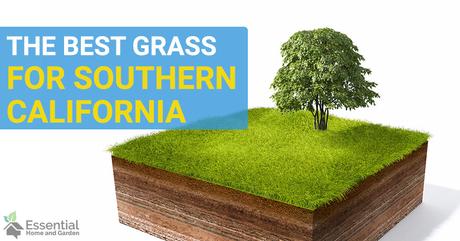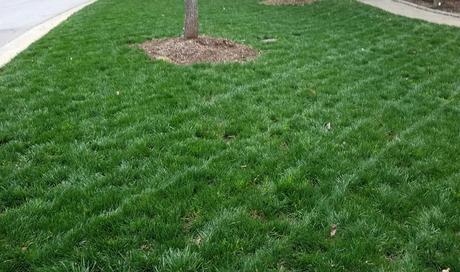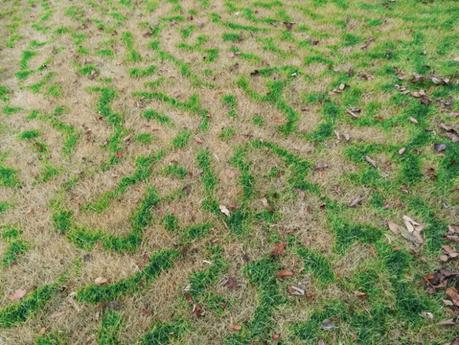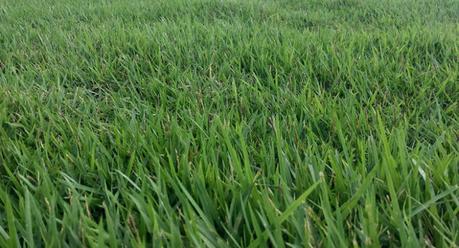
You've got the grill. You've got the lawn games. You've got the drinks with the colorful umbrellas. The only thing that's missing is the lush, green lawn to enjoy that life on. Sand can be great at the beach, but being able to feel grass between your toes at home is just as important. In a place where appearances matter, put your best lawn forward by choosing the best grass for southern California.
Gorgeous lawns are a highly sought after commodity in Southern California due to the unique growing conditions homeowners face. While there is no absence of sunshine in the region, grass needs more than just frequent sunshine to grow. You need to ensure your grass choice fits the climate and environment you live in, which is a problem many homeowners learn when their grass doesn't grow how they want.
Below are some common challenges that come with growing grass in Southern California, and the best grass type for specific lawns.
Challenges to Growing Grass in Southern California
It only rains an average of 34 days a year in Southern California, so any grass you decide on is going to have to be drought-resistant if there's a lack of water available. Otherwise, you'll have dormant or dead grass pop up - not a good look for your lawn at all. All fresh seedbeds and sod will need to be watered frequently to get the roots to take quickly. However, after the roots have set you'll want a grass that can withstand a few days without a drink of fresh water just in case.
Consider growing in cooler or wetter seasons to ensure you have the water available to grow your grass properly.
Extreme Heat
The sun is one of the most attractive aspects of Southern California, but that extreme sunshine can also be a curse, at least for your lawn (and sometimes skin). The extreme heat and direct sun can wreak havoc on the green blades you've been working for, dehydrating your lawn and causing roots to shrivel up until you've got a browned lawn. This is especially true for cool weather grasses that prefer winter over summer, so consider a versatile grass type for your lawn.
Just as the sun attracts people to sunny SoCal, the surf does too. The fresh, salty air of the coast is a major environmental factor in choosing the right grass for your lawn. If you're kicking back feeling a nice sea breeze as you enjoy your tropical drink, then consider choosing a grass that is salt-tolerant so that you're not left wondering why your lawn won't thrive.
Cool and Warm Season Grasses
There are two types of grasses to choose from: cool and warm season grasses. They don't refer to when you plant them, but rather what climate dominates your overall seasonal pattern. Your geographic location as well as your specific lawn needs determine which season grass is best for you.
Cool Season
Cool season grasses like more mild conditions on both ends of the thermometer, with optimal growth between 60-75°F but decent tolerance each way. You can expect them to tolerate some drought conditions, but they generally prefer to have a regular schedule for watering. They grow quickly with strong, deep roots in ideal conditions but may dry out and shrivel when it gets too hot for too long.
Warm Season
Warm season grasses prefer it to be as warm as possible all year long, hence the name. They thrive in temperatures between 80-95°F due to their efficient water usage, which allows them to stave off dehydration for longer.
You may even find that in the ideal growing conditions in areas like Los Angeles they need mowing weekly. You might want to consider a lawn mowing service to avoid having to spend every weekend maintaining the grass.
However, they will begin to go dormant if the weather stays below 65°F for too long.
The Best Grass for Southern California
Because Southern California has a decent variety in the temperatures experienced throughout the year, you want a more versatile grass for this region. This often means that cool season grass is more likely to thrive in Southern California. However, that is not to say that warm season grasses can't still work - you just may need to perform more maintenance!
Below are some grass types to consider for your Southern California lawn.
Tall Fescue

Season: Cool Season
These tall, narrow blades turn a deep green with thick, lush coverage when conditions are ideal. This is the most common grass in Southern California due to a higher heat tolerance for the hotter seasons while still primarily being a cool season option for a wide temperature range.
Pros
- Low-maintenance (little need to mow/fertilize)
- Absorbs water well
- Relatively drought-resistant
Cons
- Not pet-friendly- does not hold up to animal feces or urine
- Struggles in full-sun conditions
St. Augustine

Season: Warm Season
This dense, blue-green grass is practically indestructible if cared for properly due to aggressive growing and salt tolerance, making it great for property closer to the coast.
Pros
- Very Hardy to almost any conditions, including drought conditions
- Grows quickly
- Thick, lush coverage
Cons
- High-maintenance (needs to be aerated occasionally)
- May grow too aggressively
Bermuda Grass

Season: Warm Season
These thin, wispy blades create a beautiful bright green lawn that is often weed-free when properly maintained. It holds water well but doesn't like cooler temperatures at all.
Pros
- Grows quickly
- Handles high-traffic areas well
- Very drought-resistant
- Doesn't allow weeds and other invasive species to grow
Cons
- Very high maintenance
- Turns yellow in the fall


Zoysia Grass
Season: Cool Season
Given a little time and a little love, this warm season grass forms a thick, vibrant carpet of grass that is sure to impress the neighbors. It is very versatile in usage, being able to grow in a variety of soils and situations others couldn't last in.
- Salt-tolerant
- Extremely drought-resistant
- Pet-Friendly
- Handles high-traffic well
Pros
Cons
When is the best time to plant or sod my lawn?
Generally, early spring or late fall is the best time to plant or repair your lawn. New lawns require more maintenance including more a more aggressive watering schedule so using mother nature's natural rainy seasons is to your advantage. However, for patchwork mild temperatures should work just fine as well.
How do I care for my new grass?
Your schedule of maintenance will vary depending on the type of seed or sod you choose. In general, once your sod has taken root, a steady diet of sunlight, water, and mowing is all your grass needs to thrive in the land of sun and surf.
You may also want to check for compacted soil from time to time.
